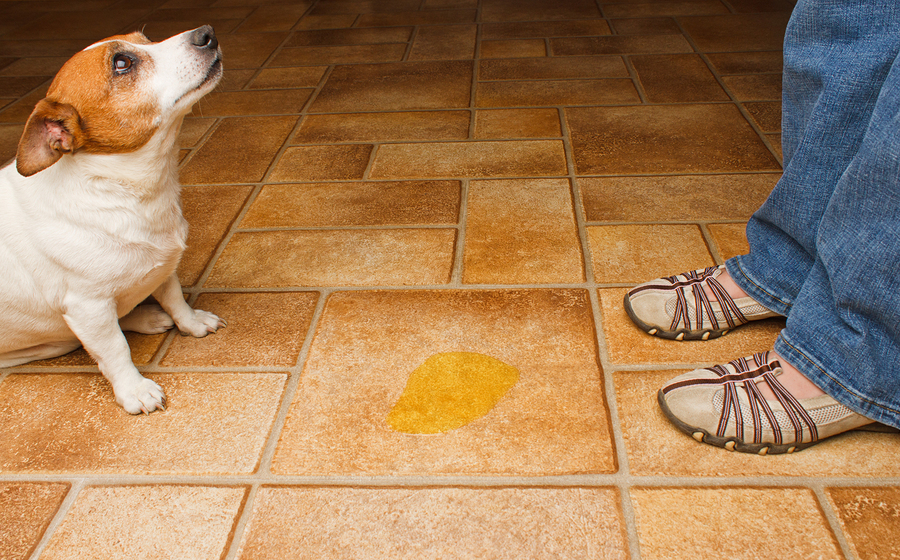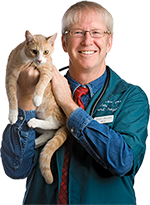Veterinarians sometimes joke that the last thing we’ll do in our hospital bed before passing on will be to answer a question about getting a dog or cat not to go to the bathroom where they shouldn’t. There’s a reason dogs used to be called “Spot”!
I’ve talked one-on-one in the exam room with pet owners for almost four decades, have discussed this topic on network TV multiple times, given yearly updates in my nationally syndicated column, and just went through this with our puppy, QT Pi. So I think I’ve figured this one out. Here my top 10 tips:
1. Dog cave. Crate train your dog. Dogs don’t like to go to the bathroom where they eat and sleep. And make note: Puppies can hold urine about one hour for each month of life, so a three month old puppy can hold it for three hours.
2. Joined at the hip. You simply can’t let a puppy out of your sight until they have gone two weeks without an accident in the house. We kept QT Pi on a six-foot leash that was attached to us or the chair we were sitting in until he could be trusted.
3. Know when it’s time to go. Pups almost always have to go potty after these three things: Finishing eating, waking up, and after when they’re done playing. Of these, the meal is the strongest trigger. So either take them out preventively after any of these events, or watch them very closely for signs they want to go pee or poo, such as sniffing, circling, or starting to squat.
4. Oops, I did it again. Don’t punish your puppy or kitten if they have an accident. It’s both useless and unkind to hold them responsible for something you did wrong.
5. Encourage smart bombing. Show your pet where you want them to go to the bathroom (in a corner of the yard or in a litter box). If you catch them going outside of this area, scoop them up and take them to where they are supposed to go.
6. Rid, not cover. You can’t fool your pets by masking odors that signal to them that your bedside rug is a great place to potty. Don’t use any product that smells like ammonia or floral sprays that mask the problem. Instead use enzyme activated products that literally eat up the molecules of urine and get rid of the source of the odor.
7. Go team, go! Be a cheerleader for #1. Or #2. When your pet goes outside or inside where you want them to go, give them wild praise like if your daughter or son just scored a goal.
8. Bribery. I recommend having a special kind of super-delectable treat that your pet only gets when he does his business in the designated area. For QT Pi, it was slices of turkey hotdog.
9. Regularity. Even housetrained dogs need to go potty at least every 10 hours. Twelve hours is really pushing it, when it is their bladder. You know how uncomfortable, even painful it is when you have to go to the bathroom but can’t. Don’t go out for dinner and drinks if your pet hasn’t been let out by someone (neighbor, pet sitter, friend).
10. Poop happens. Regardless of how well a pet is trained or how fastidious you are as a housekeeper and dedicated as a pet owner, young dog, middle aged dogs, and older ones are going to have accidents on occasion. Have you ever peed or pooped your pants? Haven’t we all?


